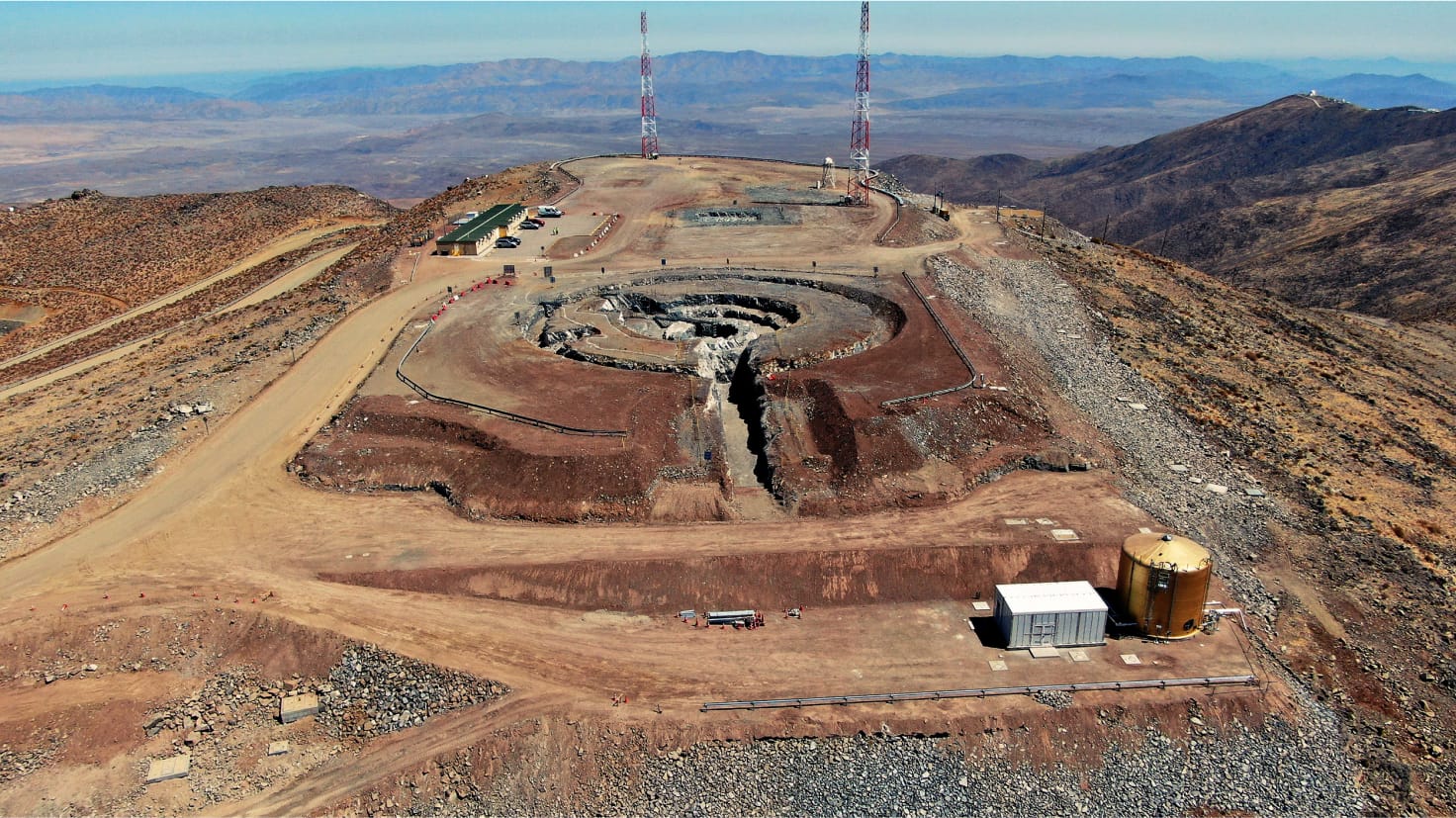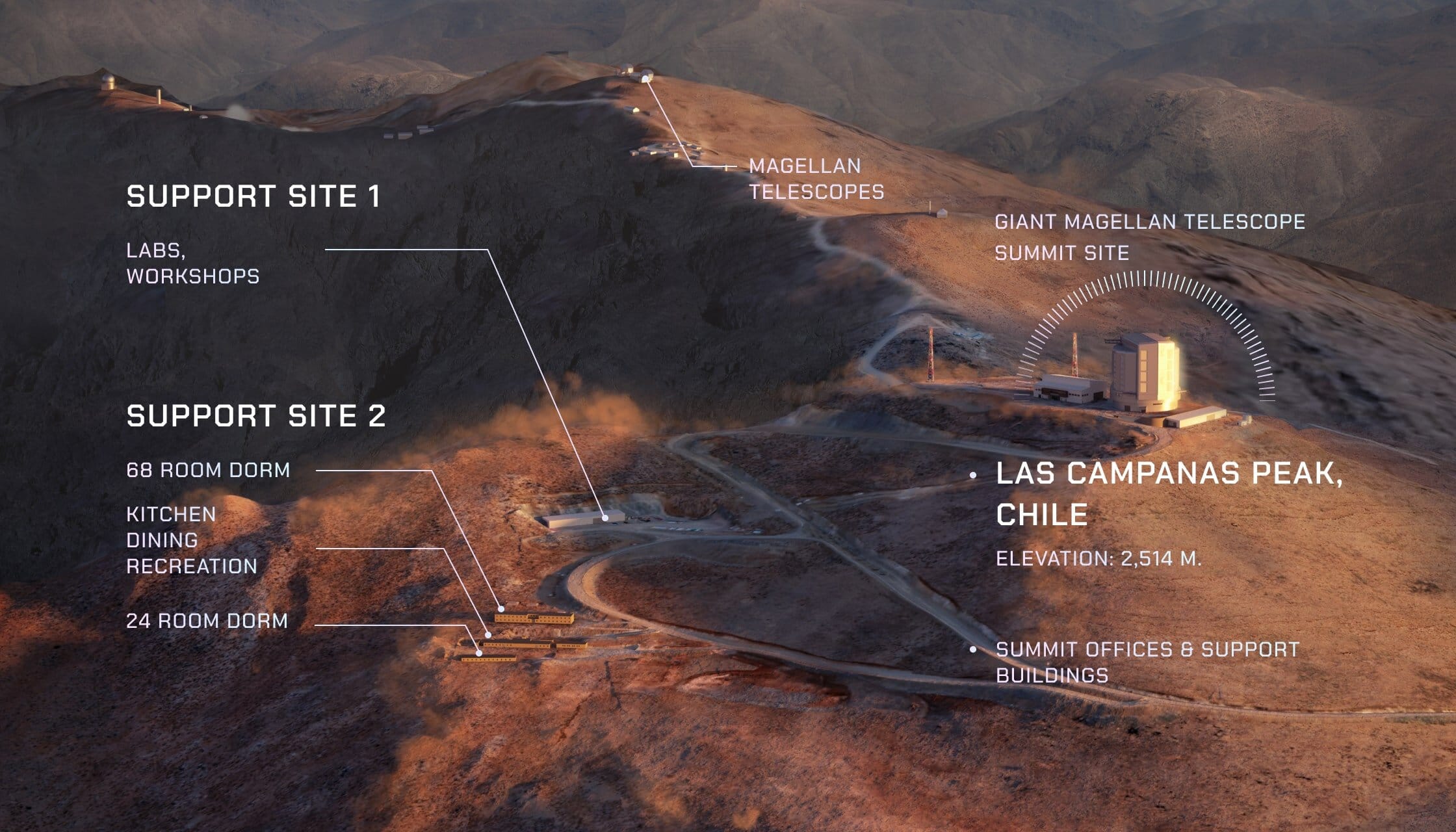
Telescope
Mount
Scientific jukebox
The telescope mount accommodates 10 powerful scientific instruments. This unprecedented flexibility allows astronomers to rapidly change observing modes, collect more scientific data, and capture more images of celestial objects in deep space than ever before.
Earthquake safety
The telescope mount can precisely position the giant mirrors as they track celestial targets moving across the sky with incredible ~1 arcsec accuracy. The azimuth track is designed to rotate a full 360 degrees on the x axis and from 25 degrees to 165 degrees on the y axis.
Climate control
The 4.5 million pound telescope mount floats on a film of oil just 50 microns thick, or the thickness of a human hair, for frictionless movement.
Bridge crane
Similar to the hull of a boat, the seven “cells” that hold the telescope’s giant 18-ton primary mirrors do not have a traditional internal load-carrying frame. Instead, the strength comes from its unique shape and external shell.
This allows the telescope mount to have a compact and lightweight design for its size. It also makes the telescope extremely stiff and stable so that it can resist image quality interruptions from wind and mechanical vibrations as the telescope moves to track celestial objects throughout the night.







